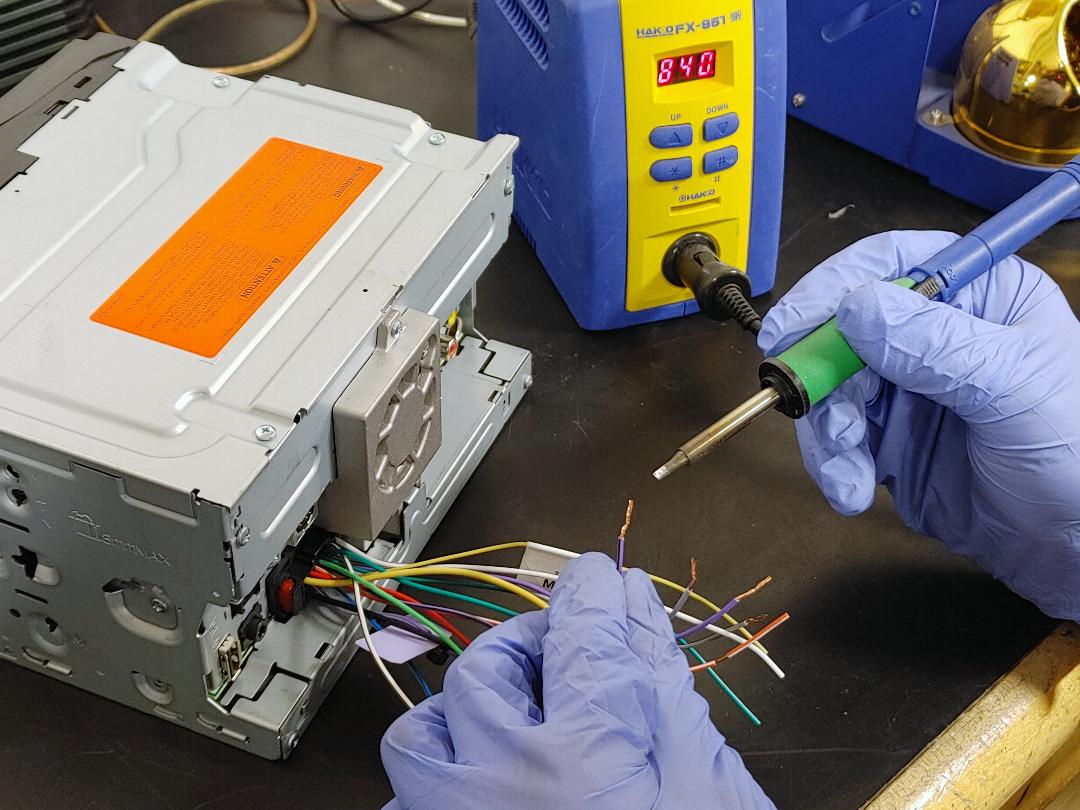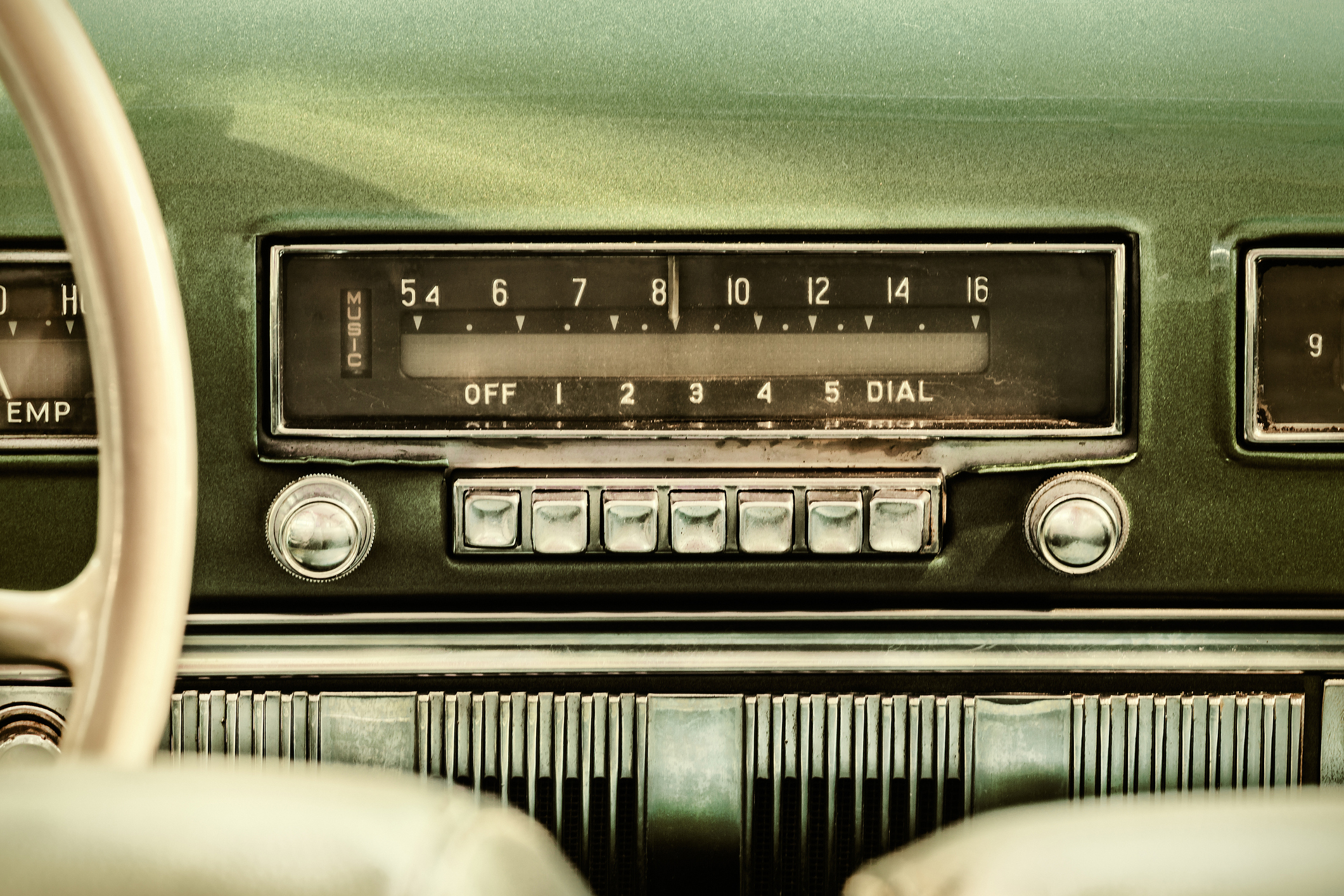If you ever inspected a car door jamb on a factory-fresh new car, you were likely greeted by a sticker stating that the OEM electronics equipment — say, the infotainment system or the HID headlights — must be recycled when the vehicle is finally put out to pasture. Not many people think about junking a vehicle at the time of its purchase, but give it 20 years, along with the effects of Mother Nature, and most vehicles are ready for the crusher.
Unfortunately, the same thing happens with car audio components – especially head units, where feature sets get dated quickly. From 10 short years ago, “iPod compatibility” just doesn’t cut the mustard when the standard is Apple CarPlay and iOS for the car today. Even traditional USB-connected Apple CarPlay might not make it much further when wireless CarPlay is increasingly an option for those who want to leave their phones in their pocket.
Is the same true of aftermarket electronics? Not necessarily, but we do know the hurdles involved in selling used car audio components on eBay. It is a hassle most customers are not looking to go through. An amplifier is not an iPad – without a test bench, there is no way of knowing if it is working or not. There is too much room for an unscrupulous buyer to complain: “This button does not work,” they might say, or “You didn’t include one of many specific wiring harnesses and now the unit is junk. I am complaining to eBay, getting my money back, and leaving you bad feedback.” Most customers are not looking to go through that — they just want to recover some funds from their last purchase to easily put towards the next one.
Giving Electronics Another Act
Enter 2nd Life – a company that facilitates the repurposing, reusing, or recycling of legacy electronics for a wide variety of institutions, consumers, and companies, including aftermarket car audio retailers and installers. Daily shipments of used electronics arrive at 2nd Life’s Richmond, Va., headquarters, where they get sorted and tested, then either repaired, cleaned, and refurbished for resale, or responsibly processed for recycling.

With nearly four decades in the consumer electronics space, 2nd Life CEO and Founder Michael Feibelman is no stranger to legacy audio going as far back as original Jensen and Audiovox equipment. “I have experience in the audio/video markets and most facets of the technology business, but my car audio roots go back 38 years,” says Feibelman, who got his professional start in 1983 working for a car audio installer. While many electronics refurbishment companies focus on the low-hanging fruit of pre-owned mobile phones, laptops, and other portable or off-the-shelf electronics, 2nd Life’s car audio offering is more of a rarity in the space.
“The driving force in the global secondary markets over the past 20 years has been computer and mobile technology,” Feibelman admits. “But car audio is a large part of our business.” There is indeed a market for it — just ask anyone who’s ever purchased or restored a car made before the late ’90s, when both factory-installed and aftermarket audio was easier to replace.
One of the biggest hurdles faced when taking in used car audio and other legacy technology is having experts deem what is valuable and what is ripe for recycling. The staff at 2nd Life each have their own expertise. “I am grateful to have a fantastic staff working for the company,” says Feibelman. “Our 12 Volt Project Manager Donald Stotts has expertise in both home and car audio, for example. Our professional team of 20 employees provides amazing support in finding products that can be repurposed.”
Partnering with Retailers
On the car audio front, two of the largest retailers working with 2nd Life are Crutchfield and Abt Electronics. Both are mail-order juggernauts with brick-and-mortar footprints. Coincidentally, both retailers are family-owned and have been, throughout their long histories, which may explain why recycling is an important component of their respective business plans. Crutchfield and Abt field used products from their customers both in-person and via their websites, then send them to 2nd Life, which buys anything that is refurbishable and recycles anything that isn’t.

As a result, both Crutchfield and Abt are able to offer gift cards or store credit to customers, which can then be applied to new purchases. In addition, 2nd Life operates 14 white-label consumer trade-in sites on the websites of retail outlets. According to Feibelman, 2nd Life’s presence on retailer websites delivers hundreds of pre-owned car audio pieces a year back to Virginia.
“We receive OEM and aftermarket car audio items, which include head units, amplifiers, and speakers,” he says. “We have developed a trade-in program that includes incentives for retailers, and welcome any stores or chains who would be interested in participating.” 2nd Life also has a pure recycling program available to clients that have become partner retailers and have already worked with their trade-in program. “The trade-in programs can be adapted to just about any business, of any size, not strictly car audio retailers,” he adds.
With the wide scope of brands in the 12-volt aftermarket, especially from boutique manufacturers making equipment for specific vehicles, the task of reselling items can be daunting. 2nd Life does it through its extensive database of legacy products. After a thorough testing process, the items are prepared for resale. “We are exhaustive in our inspections,” says Feibelman of 2nd Life’s proprietary testing process. “That way, the customer is happy, and our return rate stays low.”
Anyone looking to trade-in aftermarket audio equipment should take note of the following: a lot of 12-volt equipment becomes severely price-diminished because it is missing adaptors that are often simply left in the vehicle. This is not due to nefarious theft, but rather the lazy removal of products. Though the adaptors, or wiring harnesses, are usually proprietary, they are often easy to replace. “Typically, wiring harnesses are handled by the customer, since they would be specific to the vehicle or unit,” Feibelman says. “However, our partnerships with retailers help to supply whatever items are necessary for the next installation.” If a replacement isn’t found, you’re out of luck, since a product just won’t work if you don’t have the proprietary adaptor or harness.
Still, it’s not for lack of trying by 2nd Life. “Our ultimate goal is to repurpose or reuse any product we get in our warehouse and utilize all segments of the secondary market,” he says. “Car audio products that are deemed to have no value are recycled in bins with ‘like’ items including amps and speakers.” The worthless pile gets broken down further with other electronics such as old desktops and laptops. It is then shipped to an R2-certified recycler for downstream recycling. The R2 certification means the electronics get broken down responsibly and won’t wind up in any old landfill.
Born-Again OEM
2nd Life is also interested in OEM car audio devices that are removed and replaced with aftermarket equipment. Typically, these devices would usually be packed in the box the aftermarket component came in and then sent home with the customer, who would, in turn, find a damp place in the basement for the OEM unit to collect dust and become worthless. But 2nd Life offers a better solution that delivers a few dollars toward a customer’s new system. 2nd Life gets more than 500 OEM devices traded in every year. Even though it currently doesn’t have any partnerships with OEM manufacturers, “we are always open to new partnerships,” says Feibelman.
In part due to theft or vandalism, the prices of refurbished OEM head units — especially those of 10-year-old Lexus and Mercedes vehicles — continue to rise, so it’s not a bad corner of the refurbishment business to be in, while also providing a much-needed solution to car owners. The reasons for the rising demand are myriad. For example, as dashboard shapes become more complex for traditional installations, an OEM solution can save a lot of time for an installer, especially with older cars. After all, some non-audiophile customers are only interested in AM radio, while the owner of a 2011 Lexus with a damaged or stolen Lexus head unit just wants their car back to normal. It’s just the kind of circular, closed-loop swap that a slightly used OEM marketplace was made for, and a boon to any retailer looking to offer product solutions to their customers.

Brett Solomon is the lead reporter and writer on 12V products and retailers for Dealerscope. He has been covering the mobile electronics industry for over 20 years.















